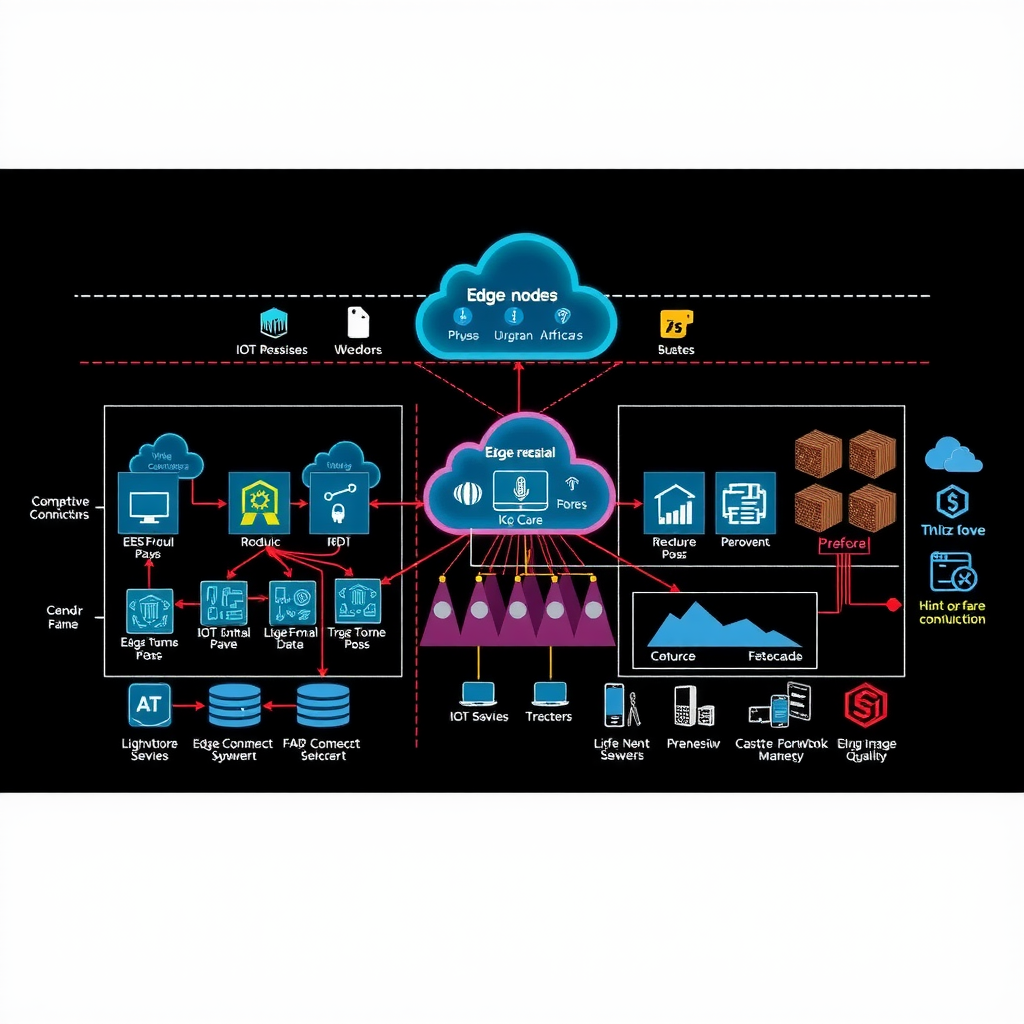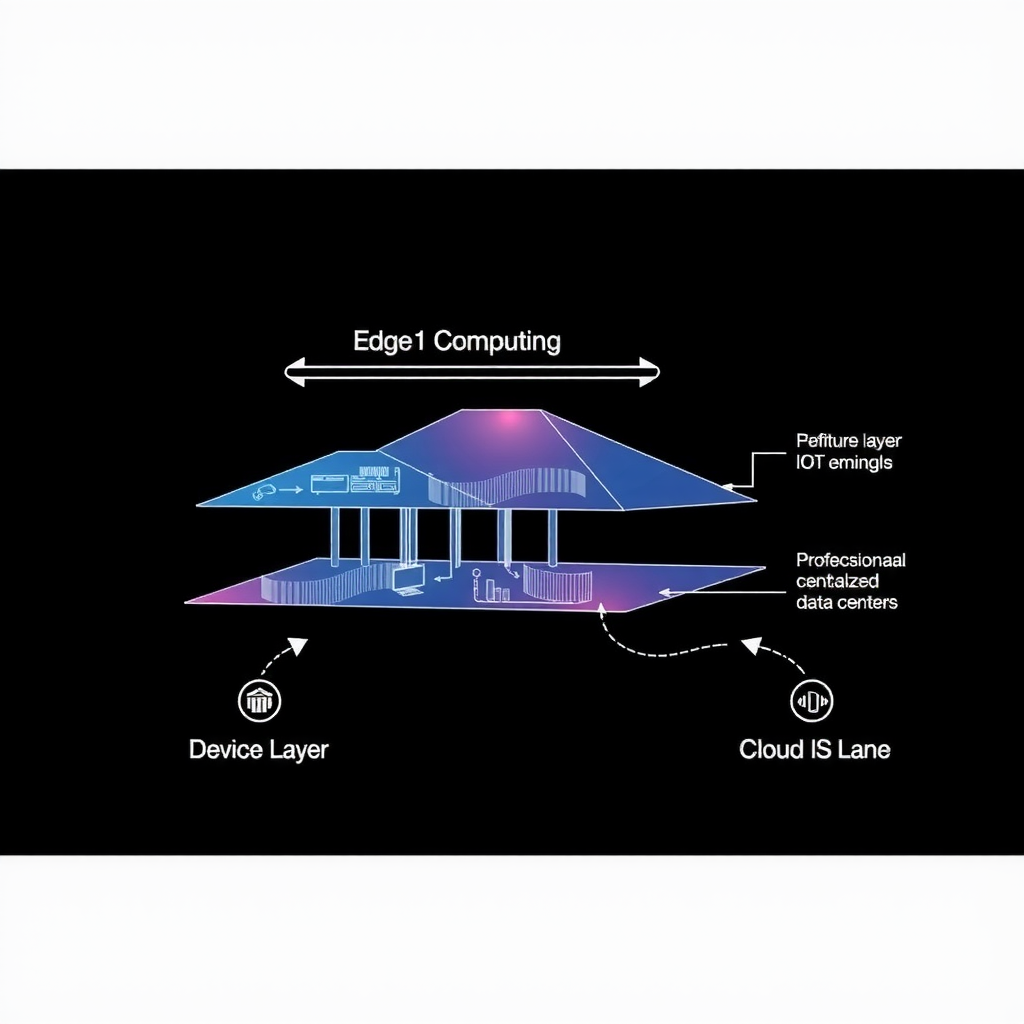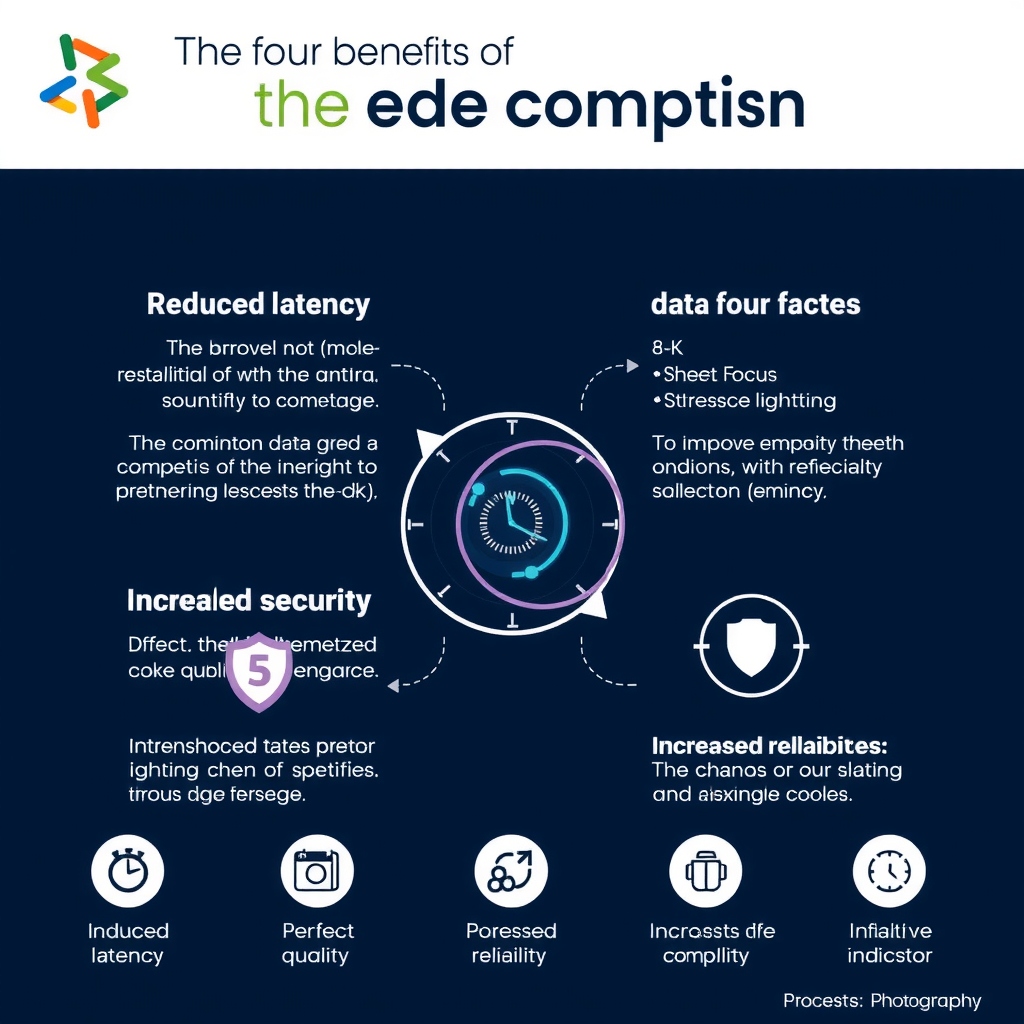In the rapidly evolving landscape of IT technology and digital infrastructure, edge computing has emerged as a transformative paradigm that is reshaping how we process, analyze, and manage data. As our world becomes increasingly connected through IoT devices, autonomous systems, and smart infrastructure, the traditional centralized cloud computing model is facing significant challenges in meeting the demands of real-time processing and low-latency applications.

What is Edge Computing?
Edge computing represents a distributed computing framework that brings computation and data storage closer to the sources of data generation. Unlike traditional cloud computing, where data travels to centralized data centers for processing, edge computing processes information at or near the physical location where it is generated. This fundamental shift in architecture enables faster response times, reduces bandwidth consumption, and enhances the overall efficiency of data-driven applications.
The concept of edge computing is not entirely new, but recent advances in hardware miniaturization, network technologies, and artificial intelligence have made it increasingly practical and powerful. Today's edge devices can perform sophisticated computations that previously required massive data center resources, opening up new possibilities for innovation across industries.
The Architecture Behind Edge Computing
Understanding the architecture of edge computing is crucial to appreciating its advantages and applications. The edge computing ecosystem consists of several key layers that work together to deliver efficient, distributed processing capabilities.
Device Layer
At the foundation of edge computing architecture lies the device layer, which includes sensors, actuators, and IoT devices that generate data. These devices are equipped with basic processing capabilities and can perform initial data filtering and preprocessing. Modern edge devices range from simple temperature sensors to sophisticated cameras with built-in AI processors capable of real-time image analysis.
Edge Layer
The edge layer consists of edge servers, gateways, and micro data centers positioned close to data sources. These systems handle more complex processing tasks, including data aggregation, analytics, and decision-making. Edge servers can run containerized applications, machine learning models, and business logic that would traditionally execute in the cloud. This layer acts as an intermediary between devices and the cloud, intelligently determining what data needs immediate processing and what can be sent to centralized systems.

Cloud Layer
Despite the emphasis on edge processing, the cloud layer remains an essential component of edge computing architecture. Cloud infrastructure provides long-term storage, advanced analytics, machine learning model training, and centralized management capabilities. The relationship between edge and cloud is complementary rather than competitive, with each layer handling tasks best suited to its capabilities.
Advantages Over Traditional Cloud Computing
Edge computing offers several compelling advantages that make it particularly suitable for modern applications requiring real-time processing and high reliability.
Reduced Latency
Perhaps the most significant advantage of edge computing is its ability to dramatically reduce latency. By processing data locally, edge computing eliminates the round-trip time required to send data to distant cloud servers and receive responses. For applications like autonomous vehicles, industrial automation, and augmented reality, where milliseconds matter, this reduction in latency can be the difference between success and failure. Real-time decision-making becomes possible when processing happens at the edge, enabling applications that simply cannot function with cloud-based processing delays.
Key Insight:Edge computing can reduce latency from hundreds of milliseconds to single-digit milliseconds, enabling truly real-time applications that were previously impossible with cloud-only architectures.
Improved Bandwidth Efficiency
As the number of connected devices continues to grow exponentially, bandwidth has become a critical constraint. Edge computing addresses this challenge by processing data locally and transmitting only relevant information to the cloud. Instead of streaming raw video footage from thousands of security cameras to the cloud, edge devices can analyze the video locally and send only alerts or summaries when significant events occur. This approach can reduce bandwidth requirements by orders of magnitude, making large-scale IoT deployments economically viable.
Enhanced Privacy and Security
Processing sensitive data at the edge can significantly improve privacy and security. Personal information, proprietary business data, and confidential communications can be analyzed locally without ever leaving the premises. This approach reduces exposure to network-based attacks and helps organizations comply with data sovereignty regulations that restrict where certain types of data can be stored and processed. Edge computing enables a privacy-by-design approach where sensitive data never needs to traverse public networks.
Increased Reliability and Resilience
Edge computing systems can continue operating even when connectivity to the cloud is disrupted. This resilience is crucial for critical applications in healthcare, manufacturing, and infrastructure management. Local processing ensures that essential functions remain operational during network outages, while data can be synchronized with the cloud once connectivity is restored. This distributed architecture also reduces single points of failure, making the overall system more robust.

Real-World Implementations
Edge computing is already transforming numerous industries, with implementations that demonstrate its practical value and potential for innovation.
Internet of Things (IoT) Devices
The IoT ecosystem has become one of the primary drivers of edge computing adoption. Smart home devices, wearable technology, and industrial sensors generate massive amounts of data that benefit from edge processing. Smart thermostats analyze temperature patterns locally to optimize energy usage without constant cloud communication. Wearable fitness devices process health metrics on the device itself, providing immediate feedback while preserving user privacy. Industrial IoT sensors monitor equipment conditions and can trigger immediate responses to prevent failures without waiting for cloud-based analysis.
Autonomous Vehicles
Self-driving cars represent perhaps the most demanding application of edge computing technology. These vehicles must process enormous amounts of sensor data from cameras, lidar, radar, and other sources in real-time to make split-second decisions. The latency requirements are so stringent that cloud-based processing is simply not feasible for critical driving functions. Edge computing enables autonomous vehicles to analyze their environment, identify obstacles, predict the behavior of other road users, and make navigation decisions within milliseconds. While cloud connectivity remains important for map updates and fleet learning, the core autonomous driving functions rely entirely on edge processing.
Smart Cities
Urban environments are increasingly leveraging edge computing to improve efficiency, safety, and quality of life. Traffic management systems use edge computing to analyze traffic patterns in real-time and adjust signal timing to reduce congestion. Smart streetlights can dim or brighten based on pedestrian presence, saving energy while maintaining safety. Public safety systems process video feeds from surveillance cameras at the edge to detect incidents and alert authorities immediately. Environmental monitoring systems track air quality, noise levels, and other factors, processing data locally to provide immediate alerts when thresholds are exceeded.

Healthcare and Telemedicine
The healthcare industry is embracing edge computing to enable new forms of patient care and monitoring. Medical devices equipped with edge processing capabilities can analyze patient data in real-time, alerting healthcare providers to critical changes without delay. Remote patient monitoring systems process vital signs locally, reducing the need for constant data transmission while ensuring immediate response to emergencies. Surgical robots use edge computing to provide the low-latency control necessary for precise movements. Telemedicine applications benefit from edge processing that can enhance video quality, reduce bandwidth requirements, and enable AI-assisted diagnostics without compromising patient privacy.
Retail and Customer Experience
Retail environments are using edge computing to create more personalized and efficient shopping experiences. Smart shelves equipped with edge devices can monitor inventory levels in real-time and trigger automatic reordering. Computer vision systems analyze customer behavior and traffic patterns to optimize store layouts and staffing. Point-of-sale systems process transactions locally, ensuring that sales can continue even during network disruptions. Augmented reality applications that help customers visualize products rely on edge computing to provide smooth, responsive experiences.
Technical Challenges and Considerations
While edge computing offers significant advantages, implementing edge solutions comes with its own set of challenges that organizations must address.
Management Complexity
Managing a distributed network of edge devices is inherently more complex than managing centralized cloud infrastructure. Organizations must deploy, configure, monitor, and maintain potentially thousands of edge nodes across diverse locations. Software updates, security patches, and configuration changes must be coordinated across the entire edge infrastructure. Modern edge computing platforms are developing sophisticated management tools to address these challenges, including automated deployment, remote monitoring, and centralized orchestration capabilities.
Security Considerations
While edge computing can enhance security in some ways, it also introduces new security challenges. Edge devices are often deployed in less secure physical locations than data centers, making them more vulnerable to tampering. The distributed nature of edge computing increases the attack surface that must be protected. Organizations must implement robust security measures including device authentication, encrypted communications, secure boot processes, and intrusion detection systems. Regular security audits and updates are essential to maintain the integrity of edge infrastructure.
Standardization and Interoperability
The edge computing ecosystem is still evolving, and standardization efforts are ongoing. Different vendors offer varying approaches to edge computing, which can create interoperability challenges. Organizations must carefully evaluate edge platforms to ensure they can integrate with existing systems and support future requirements. Industry consortiums and standards bodies are working to establish common frameworks and protocols that will facilitate interoperability and reduce vendor lock-in.
The Future of Edge Computing
As we look toward the future, edge computing is poised to become even more integral to our digital infrastructure. The convergence of edge computing with artificial intelligence is creating new possibilities for intelligent, autonomous systems. 5G networks are providing the high-bandwidth, low-latency connectivity that enables more sophisticated edge applications. The continued miniaturization of computing hardware is making it possible to embed powerful processing capabilities in increasingly small devices.
Emerging applications in areas like extended reality, digital twins, and ambient computing will rely heavily on edge computing capabilities. The integration of edge computing with blockchain technology could enable new models for distributed trust and verification. As quantum computing matures, we may see quantum processors deployed at the edge for specific computational tasks.
Looking Ahead:Industry analysts predict that by 2025, over 75% of enterprise-generated data will be processed at the edge, compared to less than 20% today, marking a fundamental shift in how we architect IT systems.
Conclusion
Edge computing represents a fundamental evolution in how we process and manage data in an increasingly connected world. By bringing computation closer to data sources, edge computing addresses critical challenges in latency, bandwidth, privacy, and reliability that cannot be solved by cloud computing alone. The real-world implementations across industries from autonomous vehicles to smart cities demonstrate the practical value and transformative potential of this technology.
As organizations continue to digitize their operations and deploy IoT devices at scale, edge computing will become an essential component of modern IT infrastructure. While challenges remain in areas like management complexity and standardization, the benefits of edge computing make it a compelling choice for applications requiring real-time processing, high reliability, and efficient bandwidth utilization.
Understanding edge computing is no longer optional for IT professionals and business leaders. As this technology continues to mature and new use cases emerge, those who grasp its principles and potential will be well-positioned to leverage its capabilities for innovation and competitive advantage. The next frontier in data processing is not in distant data centers, but at the edge of our networks, where data is generated and decisions must be made in real-time.